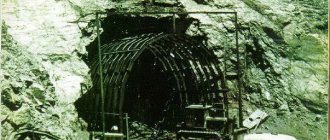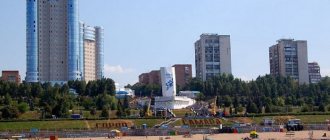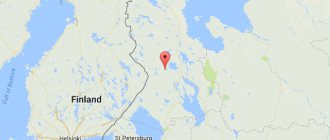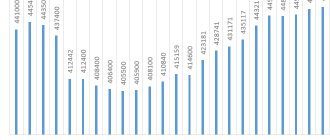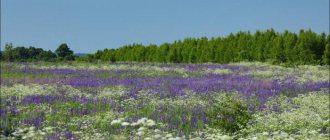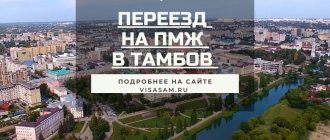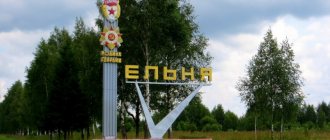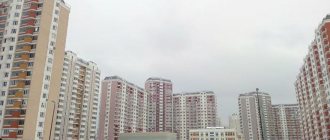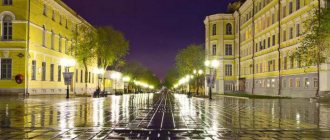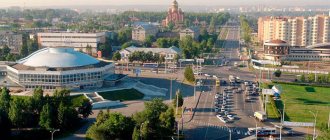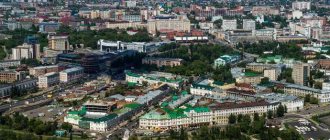Currently, there are approximately one thousand one hundred cities in our country. They are scattered across all expanses of our vast country, but are still more concentrated in central Russia. Sociologists attribute this to the fact that cities located in economically prosperous areas, which include the central regions, are the most attractive for living. We decided to tell you about two cities with similar names, but completely different histories and populations. Have you already guessed what we'll be talking about? Of course, our article is dedicated to Rostov and Rostov-on-Don - these two magnificent cities, which are real jewels in the scattering of Russian cities.
Rostov: general characteristics
Rostov is one of the most ancient cities in our country; it has a very difficult past and an equally interesting present. It is not without reason that it is considered one of the most beautiful and vibrant cities in central Russia.
The first mentions of the city in chronicles date back to the ninth century, but historians believe that in fact this date is not reliable and Rostov existed long before this date. After all, its first inhabitants were not Slavs at all.
At the moment, the population of Rostov is growing steadily. Every year the city becomes more attractive and comfortable for living. According to analysts, the quality of life enjoyed by the population of Rostov is 15% higher than the average level in Russia.
Myths and legends
As in many other cities and villages of Russia, there are many secrets and myths that shroud the city of Rostov. The population and guests know a lot of amazing stories about this city. One of them is the legend about the golden horse of Genghis Khan, which was hidden in one of the places on the banks of the Don. They say that it was cast from one hundred percent gold, and it was stolen by brave Cossacks who were not afraid to sneak into the camp of Genghis Khan. According to legend, the Cossacks were caught up and executed, but the horse could not be found. How can numerous treasure hunters who believe that this myth may be true fail to find it.
Another urban legend that is actively spread by the population of Rostov is about long underground tunnels. Rostov dungeons are notorious among ufologists and fans of mystical stories. They say that about 20 years ago, workers descended into one of these dungeons to carry out repair work on the structures that stood on the surface. However, there they encountered some disgusting creatures that were not similar to any animal known to science. Many workers were in a state of shock and could not really explain what scared them so much underground.
The population of Rostov is growing, new myths come along with new residents, and old ones are overgrown with colorful details and details.
Location and description of Rostov
Rostov is only fifty kilometers from Yaroslavl and is located on the shores of Lake Nero. This is the largest freshwater lake in the region. Archaeologists and historians claim that it was inhabited by people already six thousand years ago and the Slavs came here to fully formed settlements and settlements. Later, the lake was often called Rostov, in honor of the city itself.
The ancient history of Rostov is reflected in a large number of historical monuments. They allowed the city to be included in the country's cultural heritage list. The population of Rostov is very proud of the fact that their hometown is an obligatory stop on the route of travel along the so-called Golden Ring of Russia.
Today in Rostov there are more than one hundred and fifty monuments of federal significance. In addition to them, the population of Rostov can tell you about two hundred more places, imbued with history and related to the cultural monuments of the city. It’s worth visiting Rostov even for its extraordinary beauty, combining ancient mansions with modern buildings. Moreover, all the innovations do not spoil the appearance of the city at all; they fit well into the existing plan and complement the ancient facades of houses and churches.
Heroes and celebrities
The city has something to boast about - it has become the birthplace of many famous people. About 10 years ago, they even opened their own Avenue of Stars here, where once a year they lay another memorial sign dedicated to the honorary citizen of Rostov. Such celebrities as Sergei Bondarchuk, Mikhail Sholokhov, Anton Chekhov, Mikhail Gnesin were born, lived and worked here at different times. Dmitry Dibrov, Irina Allegrova and many other show business figures are also associated with Rostov.
Rostov the Great: brief historical background
Analysts' data suggest that Rostov is basically a mono-ethnic city. But few people know that this tradition did not always exist. We have already said that on the shores of the lake lived the Merya tribes, who reacted very favorably to the arrival of the Eastern Slavs on their lands. Moreover, many archaeologists claim that Rostov was literally a city divided into two parts. The Slavs settled in one, and the other was given to the indigenous peoples. Moreover, the city residents lived very peacefully, despite religious differences. The Slavs, who were Christians, built churches in their part of Rostov and did not impose their beliefs on the pagan tribes.
Over time, many other tribes began to flock to Rostov for permanent residence. The population has become even more diverse, but never in the entire history of the city has there been interethnic strife. This helped to form a single component of the city - Rostovites who know how to unite and coexist peacefully on the same territory.
Population
Rostov presents a rather amazing picture for residents of large cities. After all, even the population growth over the past five years has not brought the city to a new level. According to sociologists, at the end of 2016, 30,943 people lived in Rostov. This figure is stable, and fluctuations in numbers are mainly caused by an increase in the birth rate and a decrease in mortality in the city.
In addition, the average life expectancy in Rostov is 75 years, which is much higher than the national average. This fact is associated with a good environmental situation and the absence of large industrial enterprises in the city.
Future plans
In Rostov you can feel the breath of change, youth, and hope for the future. The city's residents are very friendly and hospitable, always ready to talk for hours about their favorite city. Many who came here for a while stay forever, because they can no longer imagine their life without Rostov, without the river, without its embankment. New companies and representative offices of major international corporations are opening in the city. Everyone can find something to their liking and for the soul. There are many hotels in Rostov for city guests who come for business and tourism purposes.
At the end of the 20th century, in 1999, Rostov-on-Don celebrated its 250th anniversary, summed up interim results and outlined new goals for the future. After the transition period, the economic recession associated with the disappearance of the USSR, many industrial enterprises that were previously closed are starting to operate in the city again. The city knows its problems and is working to eliminate them and make it even more attractive and comfortable for residents and visitors.
Population density and ethnic composition
At the moment, the residents of Rostov are represented mainly by Russians. They make up more than 95% of the city's population. The remaining 5% was almost evenly distributed among the nations that came here from other regions of Russia. They do not constitute a static value, so they are rarely taken into account in official data.
The population density is 1,970 people per square kilometer, which is quite average in the country among cities with a population of less than one hundred thousand people.
“The Southern Capital of Russia”: general characteristics
In the south of our country, Rostov-on-Don is one of the largest and most beautiful cities. Now it is rightfully considered a million-plus city. And his official history dates back to the mid-eighteenth century, and throughout his existence he has repeatedly appeared in a heroic light.
Now the city is the cultural, historical and administrative center of the southern region. It is simply impossible to come to Rostov-on-Don and remain indifferent to it. The city captivates you literally at first sight. Moreover, every year it becomes more and more beautiful and comfortable. Six years ago, Rostov was placed in fifth place in the ranking of cities with a high quality urban environment. The population of this wonderful metropolis is proud not only of the heroic past of their city, but also of its present, filled with brilliant prospects.
For example, next year this city will host the World Cup. This means that in the near future Rostov-on-Don will become even more beautiful and will receive a powerful impetus for further development.
Military significance
The population of Rostov was initially ready to strengthen and protect the southern borders of the country from the warlike raids of their neighbors, who always had views of these territories due to their strategic importance. During hostilities, it was extremely important to have access to the sea and navigable rivers, one of which is the Don.
It is noteworthy that at the end of the 18th century the commandant of the city was the great Russian commander Alexander Suvorov. By that time, the population of the city of Rostov had increased several times, commensurate with the changing importance of this settlement in the internal and external affairs of the empire.
Rostov-on-Don played a decisive role during the Great Patriotic War. Here is one of the largest sites of extermination of Jews by the Nazi occupiers, who occupied the city twice, in 1941 and 1942. It was finally released only in 1943.
History of the city
On the territory of modern Rostov, archaeologists have found the remains of settlements of ancient people dating back to three thousand years BC. But the official history of the settlement dates back to the time of Peter I. The Russian autocrat, during the Azov campaigns of the seventeenth century, appreciated the strategic importance of these territories. He wanted to build a fortress here to protect Russian lands from attacks by the Turks and Tatars, but for certain foreign policy reasons he was unable to do this.
Therefore, Rostovites consider the founding date of the city to be December 1749. At this time, Empress Elizabeth issued a decree on the creation of the Temernitsa customs house, which, by the will of fate, was built on the site of today's metropolis.
Rostov-on-Don: population
As we have already clarified, for many years it has been classified as a million-plus city. To be more specific, we can say that already in the eighties of the last century Rostov-on-Don crossed the line of one million inhabitants and officially joined the ranks of special megacities.
At the moment, the population of Rostov-on-Don is 1,125,103 people. An impressive figure, isn't it? According to the indicator, the city ranks tenth in the country, behind the recognized leaders Moscow and St. Petersburg, as well as several other cities. Sociologists believe that if population growth does not stop, then in fifteen years Rostov will be in the top five cities on this list. In Europe, this Russian city ranks thirtieth in terms of population.
It is worth clarifying that the figure characterizing the population of Rostov-on-Don is more than 20% of all residents of the region. We can say that every fifth person in the region lives in this metropolis. Many analysts attribute this to the abundance of jobs, because quite often people move here from villages and nearby small towns in search of a better life. Be that as it may, the city fully justifies its title of “the southern capital of Russia.”
Current data
According to published data from Rosstat in 2022, the population of the city is 1,137,904 units, the Rostov agglomeration is 2.7 million (the fifth agglomeration in the country). It is included in the list of the largest settlements in the Russian Federation in terms of the number of permanent inhabitants, taking 9th place.
An important parameter is density. The parameter displays the number of inhabitants/1 km2. The value for 2022 is 3265.15 inhabitants/km2. The area of the city is 348.5 square meters. km.
